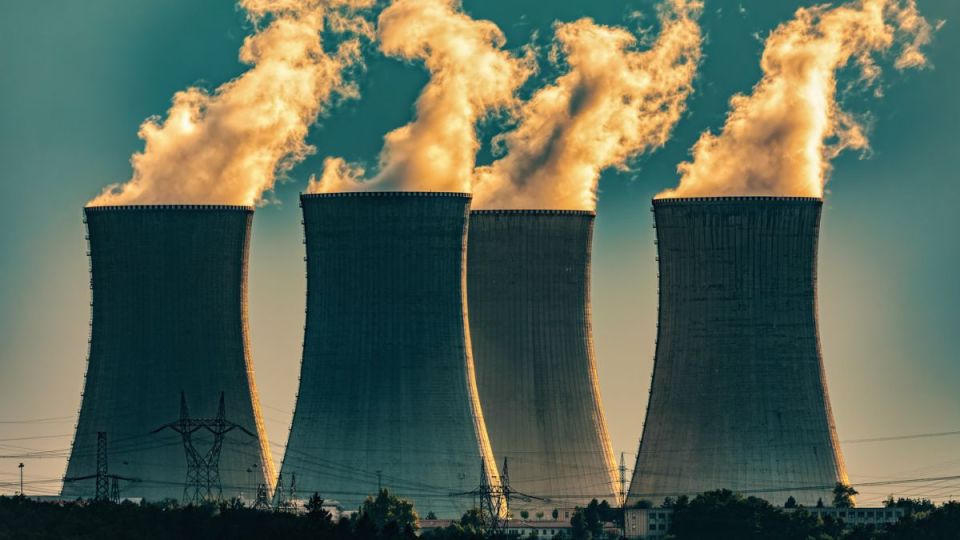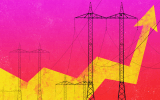


Clean energy experts have poured scorn on the Coalition’s nuclear plan, warning of even higher energy bills if it goes ahead.
Federal Opposition Peter Dutton on Friday released his long-promised analysis of the cost of running nuclear energy alongside renewables and gas, if he wins government in 2025.
The policy was immediately slammed as incomplete and risky by experts, who said nuclear power would struggle to be viable in an electricity grid with abundant solar and wind.
Clean Energy Council chief executive Kane Thornton said a nuclear-powered energy grid would be a “disaster” for the four million Australian homes that have already installed rooftop solar to lower their power bills.
“These systems would have to be switched off regularly if Australia was to move to inflexible nuclear power,” he said.
The “high-risk” plan also assumed Australia’s existing coal generation would remain in operation for much longer than expected, despite the current challenge facing the energy transition from the failure of old coal generation, Thornton said.
View this post on Instagram
Industry experts and environmentalists also said other costs should be considered, including decommissioning, nuclear waste disposal and liability for nuclear accidents.
Institute for Energy Economics and Financial Analysis lead analyst Johanna Bowyer said nuclear power also faced “compatibility issues” in an electricity grid with abundant solar and wind, and warned nuclear reactors tended to have cost blowouts during construction.
“To recover the cost of nuclear, household power bills would have to go up by $665 per year for a typical household and $972 for a four-person household,” she said.
Earlier this week, the CSIRO and Australian Energy Market Operator found – for the seventh straight year – that renewable energy sources remained the cheapest of any new-build electricity-generating technology. Analysis in the organisations’ GenCost 2024-25 Report found nuclear energy generation would be 1½ to two times more expensive than large-scale solar.
Ahead of the release of the costings, Energy Minister Chris Bowen was scathing.
“Clearly they have had to do some mathematical gymnastics to make this in any vague way add up. They’ve even downgraded their costings of renewable energy by around $30 billion over the last couple of weeks,” he told ABC TV.
“Fundamentally, what the Coalition is asking the Australian people to believe is this: That they can introduce the most expensive form of energy, and it’ll end up being cheaper. I mean it won’t pass the pub test; it won’t pass the sniff test because it is just a fantasy.”
However, the Minerals Council of Australia said the Coalition’s economic modelling dispelled arguments that nuclear is uneconomic and that lifting the ban on uranium mining would be a “distraction” from building a balanced power supply.
“Uranium is the essential fuel that powers nuclear energy, and Australia’s abundant reserves position it as a critical player in the global transition to clean energy,” chief executive Tania Constable said.
View this post on Instagram
Australia’s largest electricity supplier AGL owns land the Coalition would need to seize, including in Victoria’s Latrobe Valley and Liddell in NSW’s Upper Hunter region where a big battery is being built to replace a defunct coal-fired power plant.
AGL chief executive Damien Nicks has repeatedly rejected nuclear generation and stands by the board’s ruling that there is “no viable schedule for the regulation or development of nuclear energy in Australia, and the cost, build time and public opinion are all prohibitive”.
Some 90 per cent of Australia’s fleet of coal-fired power stations that have served cities and regions are slated to close by the 2030s.
The Coalition said it would build 14 gigawatts of nuclear energy by 2050 across the seven sites to maintain a source of “always on” 24/7 baseload power.
Modelling for the Coalition by private sector consultancy Frontier Economics put the “real annualised system cost” of a power supply that included nuclear and transmission at $446 billion to 2050 under a “step change” scenario and $331 billion under a “progressive” scenario.
Large-scale solar and wind capacity would grow from about 24,000 megawatts in 2025 to just under 47,000MW in 2051 under the plan.
Citing Frontier’s calculations, which have been disputed by clean energy peak bodies, Dutton claimed a quarter of a trillion dollars in savings could be made compared to the network being developed by the Australian Energy Market Operator to meet Labor’s net-zero targets.
But the operator’s official modelling, after consulting industry, investors, consumer and community representatives, network planners and governments, put the annualised capital cost of the federal government’s existing plan at $122 billion to 2050.
-with AAP










